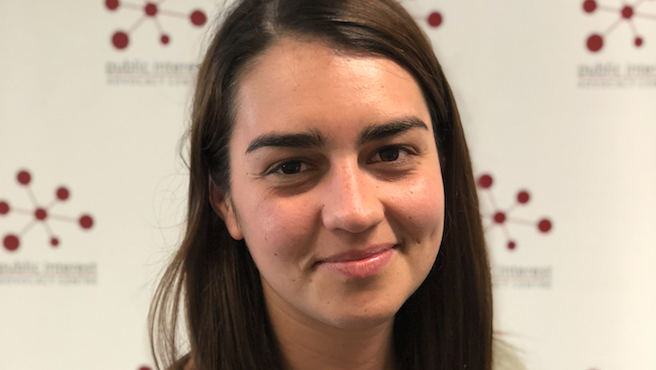
By Sydney University Law student, Anneliese Harris.
‘How do you help a homeless person facing criminal charges?’ If you had asked me this question a month ago, my answer would have probably been centred around generic statements about submissions and representation in court. After working with the Homeless Persons Legal Service (HPLS) as part of PIAC’s Social Justice Clinic Course (SJCSC), I realise that providing long-term solutions for homeless clients involves much more than a court appearance.
The SJCSC, which I completed alongside nine other Sydney University students is comprised of four days of intensive lectures, followed by two weeks working in a specific PIAC team. During this time, I have attended HPLS legal clinics, undertaken file reviews, drafted case studies, complied data on outcomes, filed administrative applications, and gone to court (it’s been a busy two weeks!). While these tasks have put my legal skills to the test, what has been most striking is their effect on my perception of what a ‘solution’ to a legal problem looks like.
My experience accompanying lawyers to the free legal clinic at Edward Eager Lodge in Surry Hills opened my eyes to the fact that undertaking legal analysis is rarely as simple as it seems at university. Clients often arrive describing complex circumstances involving several overlapping legal issues. Due to this, before even considering giving legal advice, lawyers have to be able to engage with clients to ‘bridge the gap’ between the chaotic reality being experienced by the client, and the formal recourses available within the legal system.
While I was reviewing client’s files for case studies, another thing that struck me was how often legal problems were linked with a client’s social circumstances. Often, as well as criminal and civil proceedings, clients reported family issues, health complications, substance abuse, or accommodation problems. In order to achieve lasting outcomes, lawyers need to work in conjunction with other social services to address the root causes of clients’ legal issues. One of the most striking examples I came across was that of ‘B’, a male suffering from treatment-resistant schizophrenia. He had a long history of criminal convictions while suffering manic episodes. It was not until he was properly diagnosed and placed on a consistent mental health treatment plan that the cycle of criminal convictions was able to be broken.
Finally, the ability to participate in PIAC’s StreetCare meetings, which brings together diverse groups of people who have experienced homelessness to discuss policy advocacy, opened my eyes to the fact that legal solutions cannot only be reactionary. Hearing stories about the way in which homeless people are “criminalised” though actions such as fines for riding public transport without a ticket, begging bans, and current trespass laws laws makes it clear that helping homeless clients is as much about having them take part in the evolution of the law, as it is about representing them. If there is one thing that I will take away from my time at HPLS, it is that help involves much more than a court case.